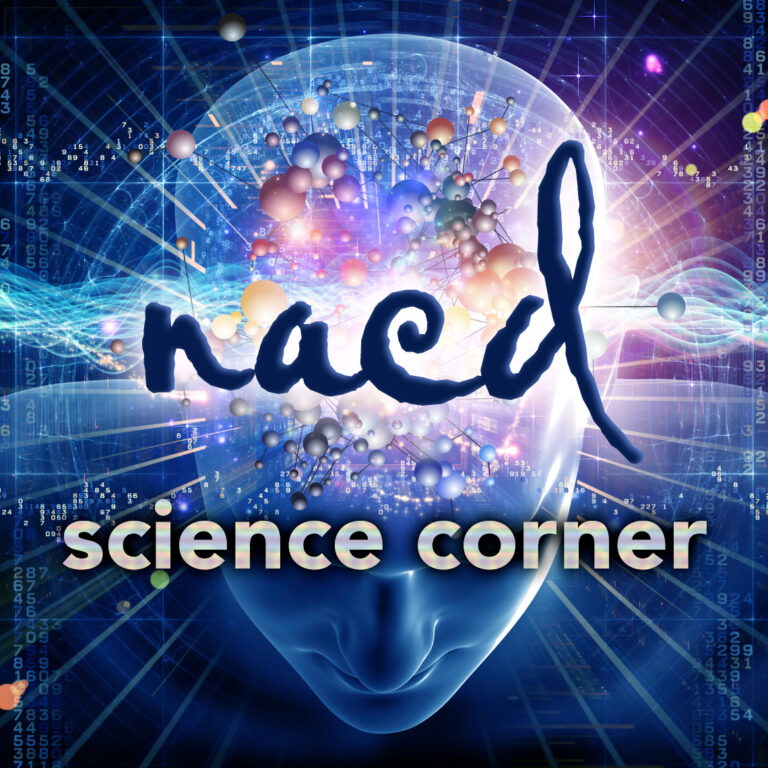Seizures
Robert J. Doman, M.D.
Normal brain activity produces a constant flow of minute electrical waves which flow from every cell of the cortex (gray matter) as well as the cerebellum and the thalamus within the brain. These electrical waves vary in their strength, which when measured on the EEG (electroencephalogram) would represent the height or amplitude of the wave. The waves also vary in their shape and frequency. These waves are measured by an electroencephalogram, which is produced by a sensitive electronic instrument which generally is attached to the patient by eight wires or electrodes to measure waves in four different areas of the cortex in each hemisphere (half) of the brain.
The most prominent form of brain wave has a frequency between 6 and 13 waves per second and is called an Alpha wave. Waves between 14 and 50 per second are called Beta waves. Very slow waves between .5 and 5 per second are called Delta waves. Generally sensory stimulation and Acidosis (excessively acid blood) speed up the brain waves. Lack of oxygen, sedative drugs, sleep, and relaxation slow down the brain waves. Biofeedback and many forms of relaxation attempt by conscious effort to help the brain produce more Alpha waves, generally by sitting with the eyes closed.
A normal person has a brain wave pattern which remains remarkably constant under similar conditions from one year to the next. In a normal EEG there is a combination of the various normal waves Alpha, Beta, and Delta. A newborn child’s brain waves are immature with small irregular waves showing very little if any pattern. As the child’s brain matures so does the EEG showing a gradually more mature normal pattern.
A seizure is a temporary disruption of the normal brain wave pattern. The same is true of a Convulsion, an Attack, or an Epileptic Fit. They all represent some form of disruption of the normal brain wave patterns. They all may represent some form of body defense mechanism aimed at attempting to prevent a temporary malfunction in the brain from suffering further damage from such possible causes as injury, pressure, lack of oxygen, lack of circulation, poisons or toxins, edema (excessive fluid), or metabolic disturbances. After seeing thousands of children and adults, many of whom significantly regressed in brain function when seizures were not properly controlled, NACD believes that control of seizures is an important goal in treating such clients. To achieve this goal, correction, in so far as possible, of any underlying precipitating factors is critical. In all cases, testing for and eliminating underlying causes by a competent Neurosurgeon or Neurologist is essential.
Testing might include the following:
- Skull x-rays for possible craniostenosis (premature closure of one or more of the skull sutures) or a possible undetected fracture. Seizures are common in depressed (pushed down) fractures.
- Urinalysis to help diagnose diabetes and other metabolic disorders.
- A series of EEG’s. Often a single EEG will appear normal even when the patient has a seizure disorder. A series of EEG’s would pick it up and show whether it is getting better or worse. Often I see a seizuring child who has not had an EEG in over a year. In my opinion that is not good close supervision of such a serious problem.
- Lab tests including a blood tests for sugar levels in as much as a low sugar level may precipitate a seizure. Other blood studies should be done to discover possible metabolic disorders, the presence of any toxins or poisons in the blood, etc. Periodic (usually every 3 to 6 months) blood levels of any anticonvulsant medication is critical to proper seizure control.
- CAT Scan (Computerized Axial Tomography). If a serious brain disorder is suspected a brain scan should be done. This important test presents images of the brain at many levels. It is capable of showing most physical abnormalities of the brain.
- Neural Magnetic Resonance Imager (MRI). This is a newer way of viewing brain abnormalities in even greater detail than the CAT scan.
Causes of Seizures
There are many causes of seizures. Listed below are some of the common causes.
- Organic Brain Injury. This includes birth trauma, blood incompatibilities, premature separation of the placenta, oxygen deprivation from delayed or obstructed breathing or the umbilical cord wrapped around the child’s neck, tuberous sclerosis, vascular accidents and malformations, trauma such as fractures or edema (excessive fluid), pressure from Hydrocephalus, or tumors, etc.
- Metabolic. Deficiencies of calcium, magnesium, Vitamin B6, Hypoglycemia (low blood sugar), inborn errors of metabolism such as PKU, Maple Sugar Urine Disease, Urenia, Liver disorders, etc.
- Febrile (fever). This may not be serious the first time but if persistent may lead to non-febrile seizures. Childhood fevers require attention and treatment.
- Infections: Meningitis (bacterial or viral), Encephalitis, Herpes Simplex, Cytomegatic Inclusion Diseases, etc.
- Poisons, Toxic Reactions, Toxins: Lead, arsenic, etc.; drug overdosage, anti-convulsants, salicylates, etc.; Tetanus, Pertussis, etc.
- Idiopathic: a fancy medical term for “We don’t know!”
Conditions which may be mistaken for seizures include the following:
- A startle reflex, which is a normal twitch, jerk, or jump in response to a loud, sudden noise
- Breath holding
- Hyperventilation (breathing fast and deep)
- Shivering or urination
- Orthostatis Hypotension, which is weakness when standing suddenly after a prolonged illness, etc.
- Daydreaming or “turning you off” could resemble a Petit Mal
- Temper tantrums or hysteria.
If you are not sure if the patient is or is not having seizures a series of EEG’s is the best way to find out.
Types of Seizures
There are many types of seizures and many different names for seizures. Below are some of the more common ones.
- Idiopathic where the cause is unknown.
- Petit Mal very brief (one or two seconds) lapses of attention with staring or blinking eyes following which the child resumes former activity. The EEG shows spikes and slow waves (3 per second).
- Salaam sudden brief episodes of nodding (like the Indian greeting).
- Myoclonic sudden jerking without loss of consciousness; common in children and young adults.
- Akinetic sudden collapse without muscle jerking. The EEG is like Petit Mal.
- Visceral or Autonomic Seizure Equivalent. The only outward manifestation might be paleness, headache, or indigestion. Diagnosis is best made by a series of EEG’s. Every time a brain injured child has one of these symptoms it does not necessarily represent Visceral Seizures.
- Diurnal any daytime seizures.
- Nocturnal any nighttime seizures. Most seizures occur at night or on awakening.
- Febrile a seizure, mild or severe, occurring with a fever; usually in children between ages of 6 months and 3 years.
- Psychomotor a period of confusion followed by repetitive meaningless movements. The EEG often shows temporal lobe spikes. About 70% also have Grand Mal seizures.
- Grand Mal seizures sometimes start with an Aura, a cry, or a weary feeling followed by loss of consciousness and tonic movement often on one side of the body, with possible loss of bladder or bowel control. This is followed by a clonic jerking stage, which is followed by a long period of sleep. The EEG shows sharp fast (25-30/second) spike waves.
- Jacksonian or focal these are associated with localized pressure as the result, for example, of a depressed fracture of the skull or from a local or focal area of irritation as from scar tissue or a cyst. They generally start with jerking in one area of the body, which may spread over the entire body. Neurosurgery may be necessary to reduce the pressure of the depressed fracture.
- Hypsarhythmia massive myoclonic seizures with an onset before one year of age with continuous high voltage slow waves and spikes.
- Status Epilepticus a continuous state of uncontrolled seizuring. Often the result of poorly treated seizuring or sudden cessation of anticonvulsant medication. This generally requires hospital care.
- Mixed types various combinations of the above types.
Generally each must have its own treatment.
Reprinted from the Journal of The NACD Foundation (formerly The National Academy for Child Development)



